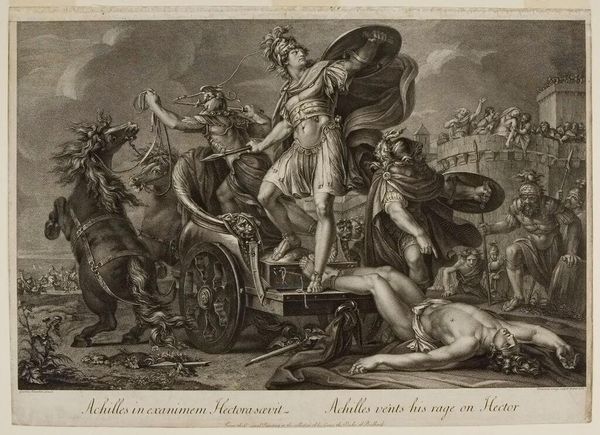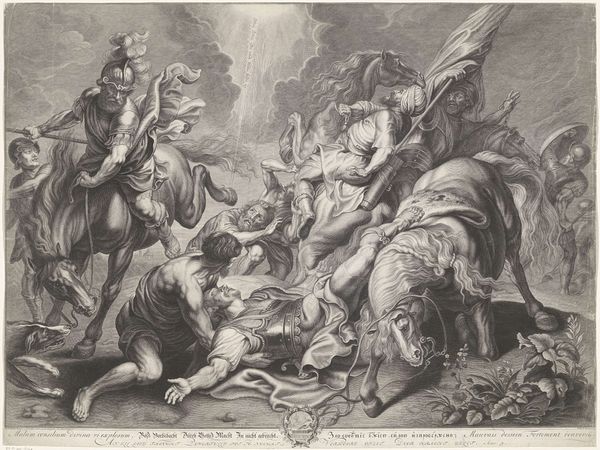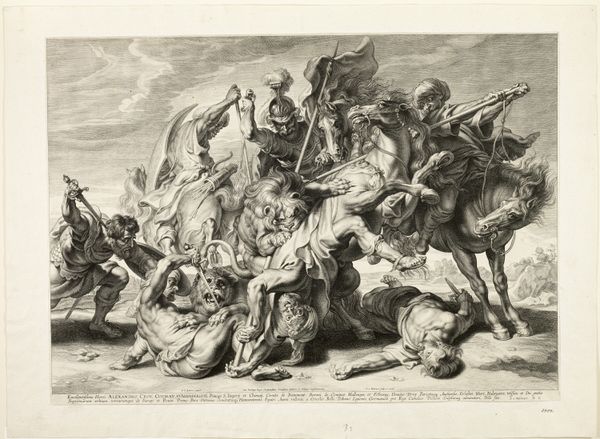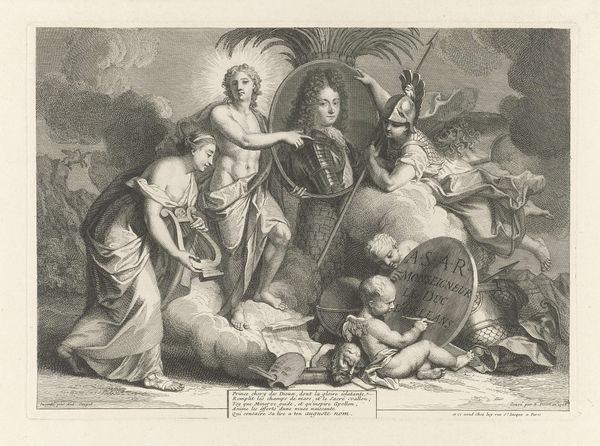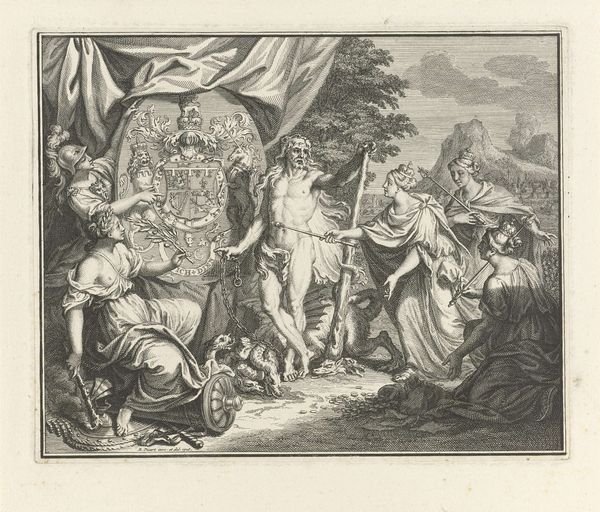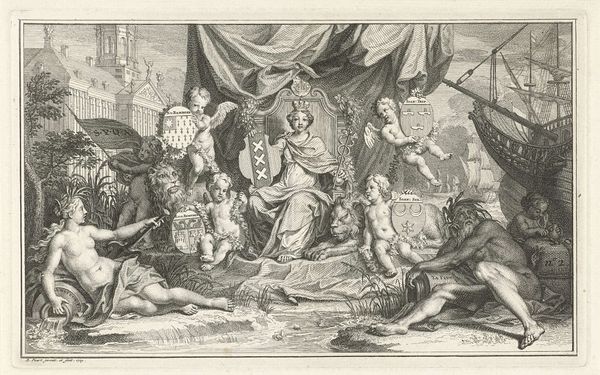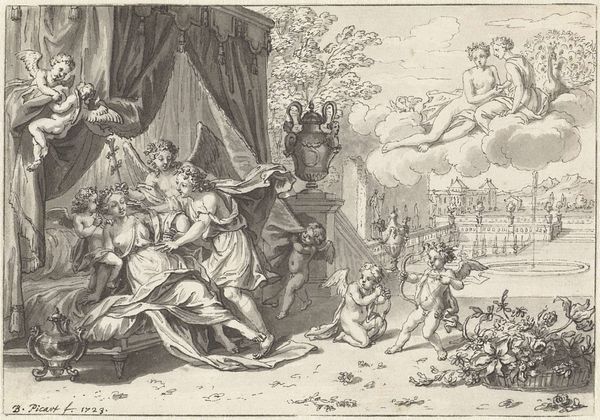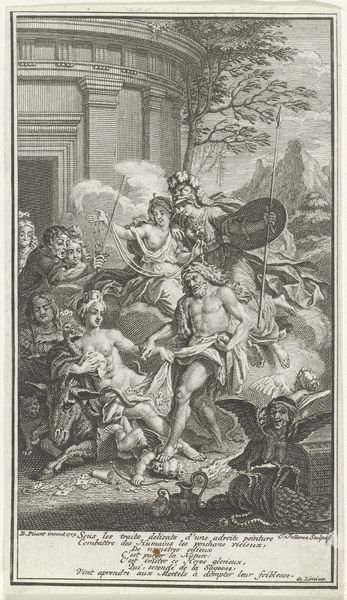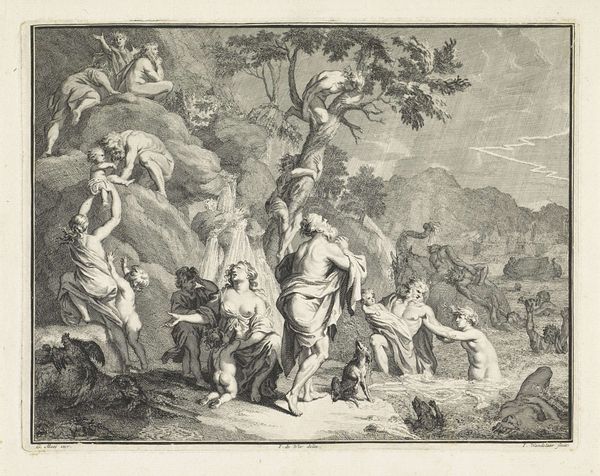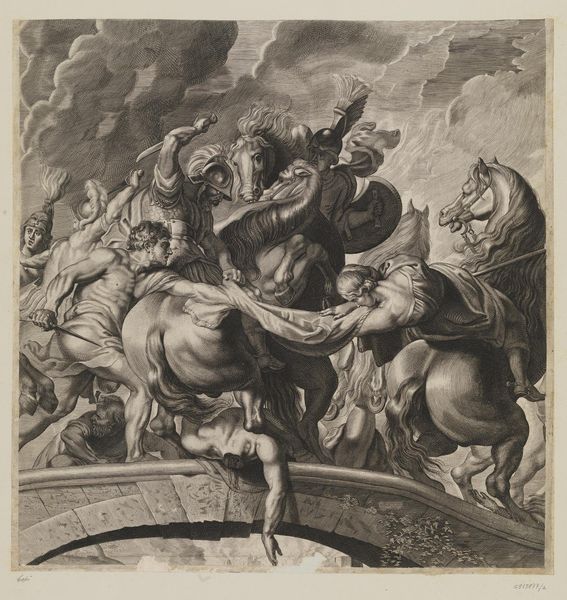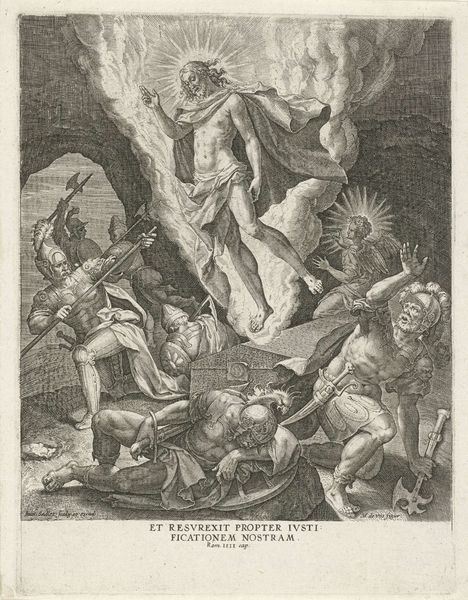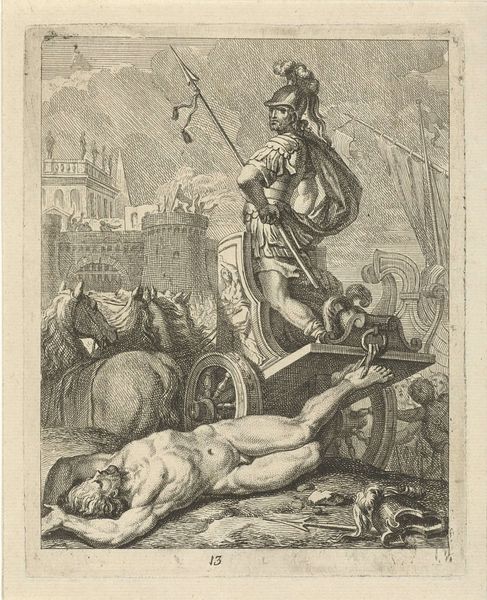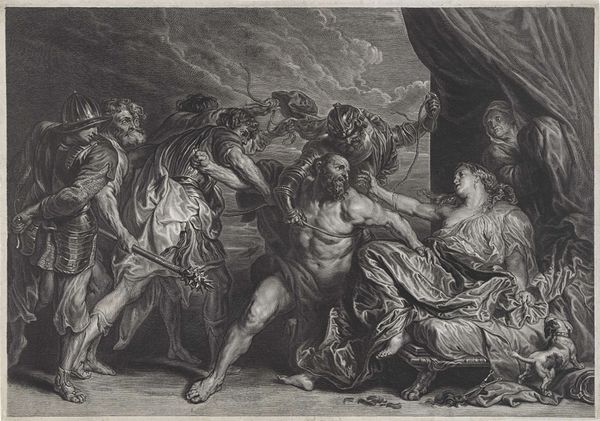
print, engraving
#
neoclacissism
#
allegory
#
narrative-art
# print
#
greek-and-roman-art
#
old engraving style
#
figuration
#
history-painting
#
engraving
Dimensions: height 441 mm, width 626 mm
Copyright: Rijks Museum: Open Domain
Curator: Looking at this engraving by Domenico Cunego, titled "Achilles Dragging Hector's Body Behind His Chariot," dating back to 1766, one can't help but immediately react to its violence. Editor: It's more than violence, isn’t it? It’s this stark display of brutal victory. Achilles’ rage practically vibrates off the paper. I see this cold, terrible glory in the details; it's really effective, even now. Curator: Indeed, the piece masterfully encapsulates the emotional extremes present in the classic tale from Homer's Iliad. Cunego captures the fury of Achilles as he desecrates Hector’s body. Note the artist’s deployment of sharp lines and stark contrasts; the Neoclassical precision amplifies the graphic intensity. Editor: Right, the almost obsessive detail contributes to its visceral impact, but what gets me is that Cunego makes me wonder about what all this brutality signifies in terms of "heroism." I mean, the image does romanticize something truly savage. Do you think this complicates its reading? Curator: Absolutely! The artist grapples with portraying the complexity of Achilles, who embodies both unparalleled strength and unbridled vengeance. The image evokes a classical aesthetic with those perfect forms, but then there’s that underlying discomfort—it speaks to the fragility of heroism, especially in light of loss and rage. Editor: It is potent—a study in anger and devastation, carefully carved into existence. For me, there's also the question of legacy. This brutal scene becomes fixed. Forever chasing Hector. Does it memorialize Achilles or indict him? Curator: Perhaps both, as these ancient tales teach us that heroes are never without their fatal flaws. It's fascinating how an 18th-century engraving can still evoke such a primal response. Editor: I am left wrestling with whether it captures glory or whether it offers a rather damning verdict. Whatever the truth is, it seems we’re both left to wrestle with what it all *means* today!
Comments
No comments
Be the first to comment and join the conversation on the ultimate creative platform.
